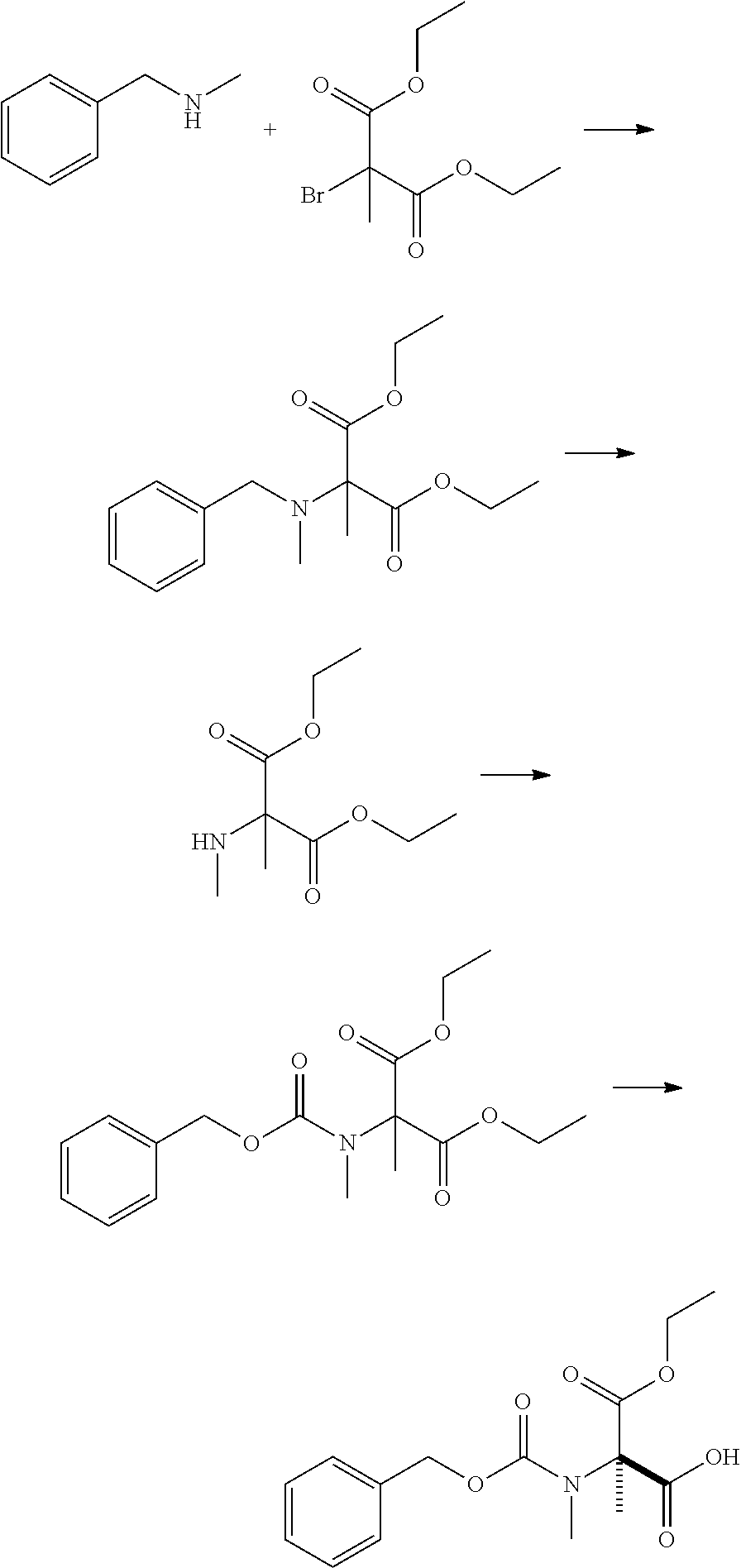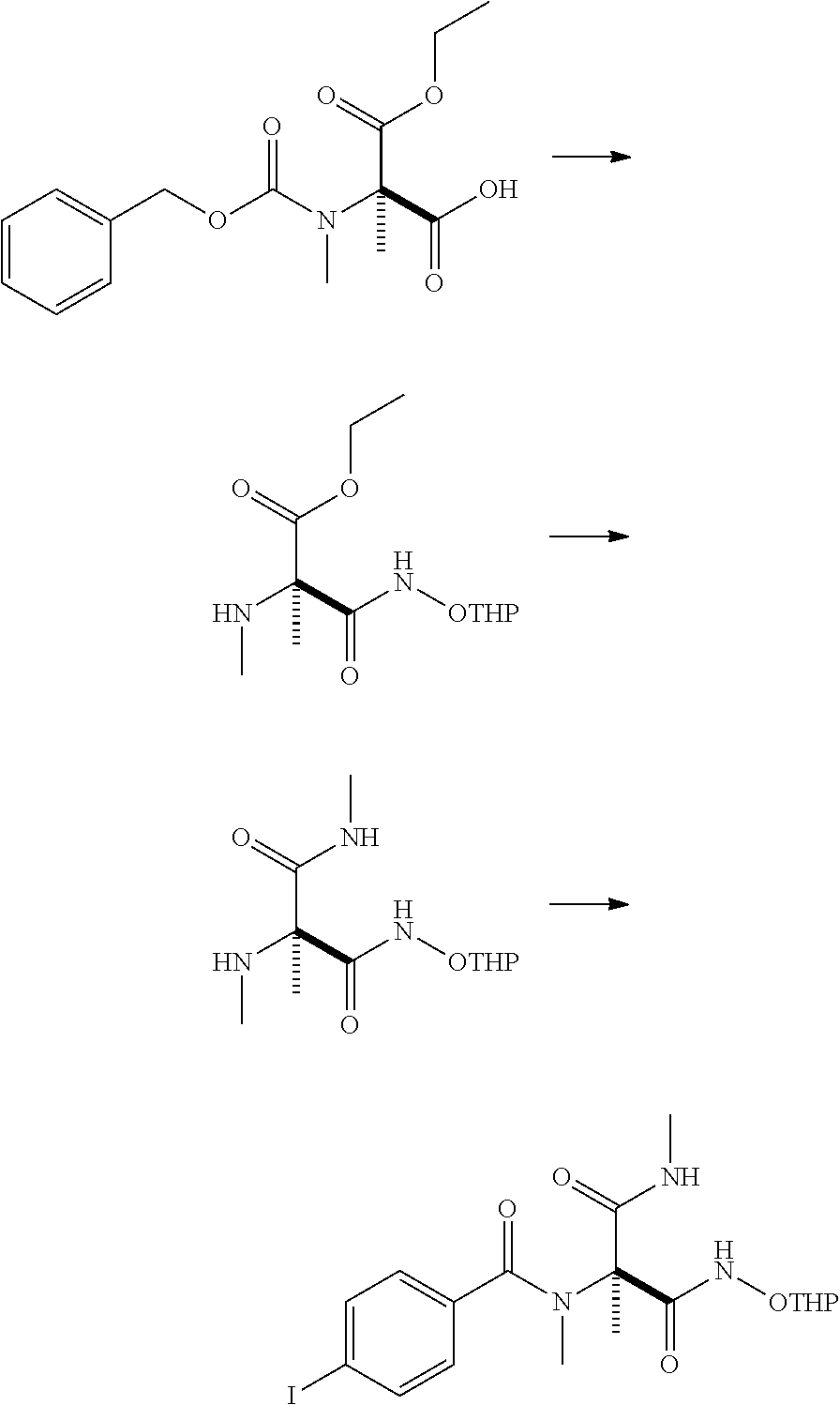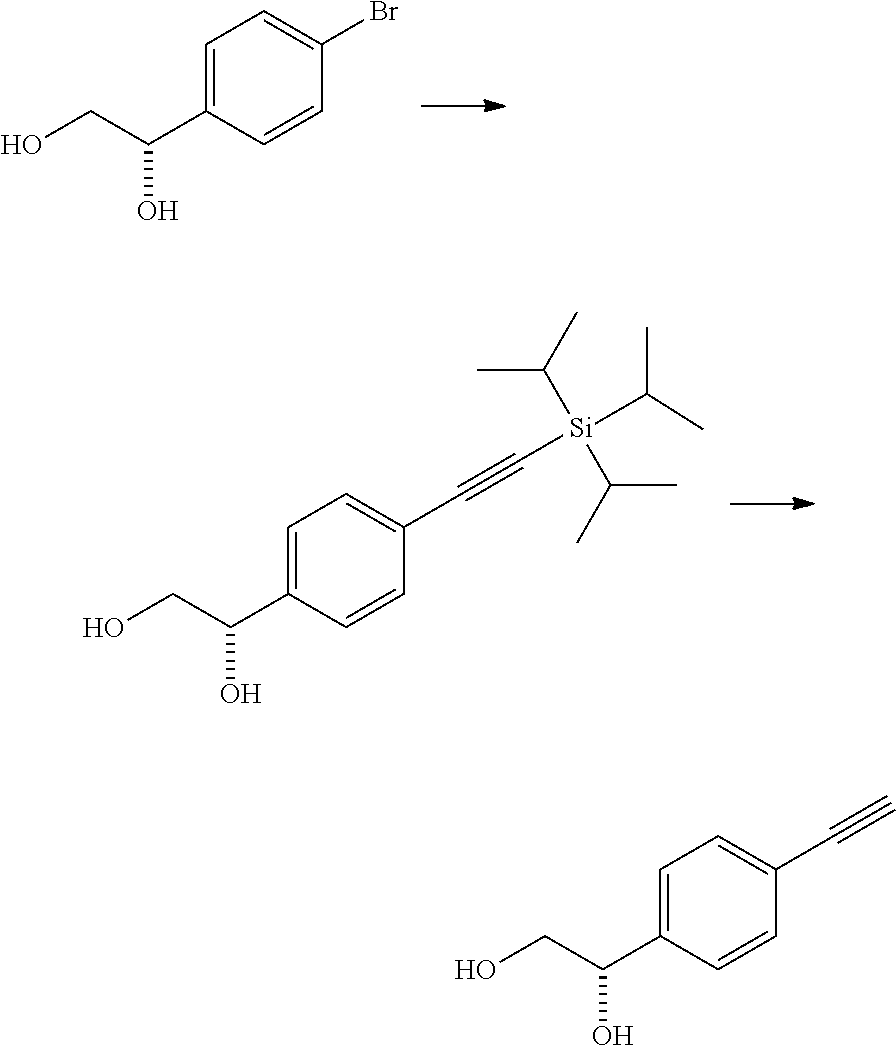Method for using novel hydroxamic acid derivative and antibacterial substance in combination
a technology of hydroxamic acid and antibacterial substance, which is applied in the direction of antibacterial agents, drug compositions, peptide/protein ingredients, etc., can solve the problems of limiting the application of antimicrobial substances, the theory of combination therapy directed against resistant bacteria has not been established, and the problem of major problems worldwide, to achieve the effect of potent antimicrobial activity
- Summary
- Abstract
- Description
- Claims
- Application Information
AI Technical Summary
Benefits of technology
Problems solved by technology
Method used
Image
Examples
production example 1
[0184]
[0185]To 1000 mL of N-methylpyrrolidone, 421 g of N-methylbenzylamine and 400 g of diethyl 2-bromo-2-methylmalonate were added and stirred at 100° C. for an hour. Then, the reaction mixture was cooled. After 1.5 L of toluene and 1.5 L of water were added sequentially, 70 mL of hydrochloric acid was added. The organic layer was separated, and the solvent was distilled off under reduced pressure to obtain 499 g of a colorless oily product.
[0186]To 400 g of the obtained oily product, 2.0 L of ethyl acetate, 32 g of 10% palladium on carbon (50% wet) and 81.9 g of acetic acid were added sequentially and stirred under hydrogen atmosphere (0.5 MPa) at 45° C. for 18 hours and 30 minutes. After the reaction mixture was cooled and filtered over celite, the residue was washed with 400 mL of ethyl acetate. To the filtrate, 1200 mL of water was added. Hydrochloric acid was used to adjust the pH to 2 or less, and the aqueous layer was separated. To the obtained aqueous layer, 1200 mL of eth...
production example 2
[0195]
[0196]To 250 g of (((((2R)-2-carboxy-1-ethoxy-1-oxopropan-2-yl)(methyl)carbamoyl)oxy)methyl)benzene, 1300 mL of ethyl acetate and 1.0 mL of N,N-dimethylformamide were added. After 133 g of oxalyl chloride was added dropwise at 5° C. over 20 minutes, 200 mL of ethyl acetate was added. The reaction mixture was warmed to 20° C. and stirred for 4 hours. Under reduced pressure, 1395 mL of the solvent was distilled off. To the obtained residue, 1000 mL of tetrahydrofuran was added and cooled to 8° C. At the same temperature, 94.1 g of triethylamine and 109 g of O-(tetrahydro-2H-pyran-2-yl)hydroxylamine were added sequentially, and warmed to 20° C. over 3 hours with stirring. After the reaction mixture was allowed to stand overnight, 225 mL of acetone was added and stirred for 40 minutes. Subsequently, 750 mL of toluene and 1000 mL of water were added and cooled to 10° C. Then 62 mL of hydrochloric acid was added. Additionally, the pH was adjusted to 3 with 6 mol / L hydrochloric acid ...
production example 3
[0205]
[0206]To a mixture of 1.08 g of (1S)-1-(4-bromophenyl)ethane-1,2-diol, 350 mg of bis-triphenylphosphinepalladium(II) dichloride, 190 mg of copper(I) iodide, and 10 mL of n-butyl acetate, 7.8 mL of triisopropylsilylacetylene and 7.0 mL of triethylamine were added under a nitrogen atmosphere, and the resulting mixture was stirred under reflux for 1 hour. The reaction mixture was cooled, a saturated aqueous solution of ammonium chloride was added, the pH was adjusted to 6.2 with 6 mol / L hydrochloric acid, then Celpure and ethyl acetate were added, and then the insoluble material was filtered off. The organic layer of the filtrate was separated, washed with a saturated aqueous solution of sodium chloride, and then dried over anhydrous magnesium sulfate. The solvent was distilled off under reduced pressure, and the obtained residue was subjected to silica gel column chromatography [eluent; ethyl acetate:hexane=40:60→45:55] to obtain 1.32 g of a yellow oil.
[0207]To a mixture of 1.32...
PUM
| Property | Measurement | Unit |
|---|---|---|
| Electrical conductance | aaaaa | aaaaa |
| Antimicrobial properties | aaaaa | aaaaa |
Abstract
Description
Claims
Application Information
 Login to View More
Login to View More - R&D
- Intellectual Property
- Life Sciences
- Materials
- Tech Scout
- Unparalleled Data Quality
- Higher Quality Content
- 60% Fewer Hallucinations
Browse by: Latest US Patents, China's latest patents, Technical Efficacy Thesaurus, Application Domain, Technology Topic, Popular Technical Reports.
© 2025 PatSnap. All rights reserved.Legal|Privacy policy|Modern Slavery Act Transparency Statement|Sitemap|About US| Contact US: help@patsnap.com



